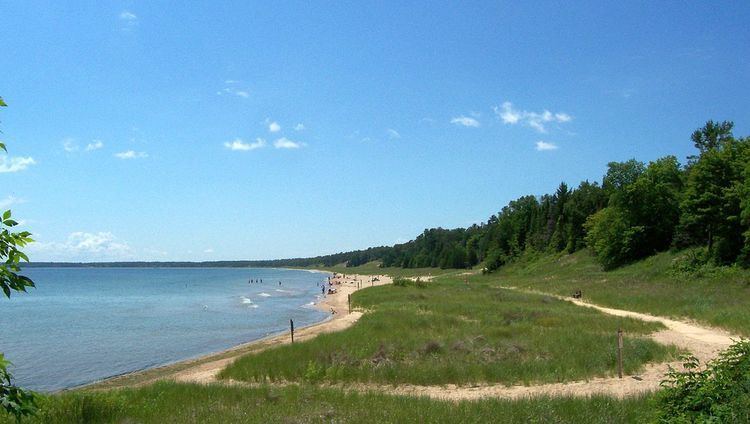Area 3.509 km² | Phone +1 920-823-2400 | |
 | ||
Address 3275 Clarks Lake Rd, Sturgeon Bay, WI 54235, USA Hours Open today · 6AM–8PMSunday6AM–8PMMonday6AM–8PMTuesday6AM–8PMWednesday6AM–8PMThursday6AM–8PMFriday6AM–8PMSaturday6AM–8PMSuggest an edit Similar Cave Point County Park, Glidden Lodge Beach Re, Peninsula State Park Golf Cour, Door County Visitor Bu, Rustic Timbers Door Cou | ||
Whitefish dunes state park photo montage
Whitefish Dunes State Park is a 867-acre (351 ha) state park of Wisconsin, United States, on the eastern shore of the Door Peninsula. This day-use park preserves the most substantial sand dunes on the western shore of Lake Michigan. The remains of eight successive prehistoric Native American villages are on the National Register of Historic Places as Whitefish Dunes-Bay View Site.
Contents
- Whitefish dunes state park photo montage
- Whitefish dunes state park door county wi travel show
- History
- Recreation
- Nature
- Geology
- References
Whitefish dunes state park door county wi travel show
History
From 100 B.C. to the later 1800s there is evidence of early settlers. The North Bay people occupied the area from 100 B.C. to A.D. 300, leaving pottery in the dunes. Their descendants, the Heins Creek people, then occupied the area. In the Late Woodland period, there were two occupations: a group settling there from A.D. 800-900, and the Oneota, who arrived around A.D. 900. In the early 1800s, fishing camps were established in the area, including one by New Englander James Pearson Clark. Maritime trade began to grow.
Recreation
Recreational activities at Whitefish Dunes include hiking, fishing, canoeing, boating, and swimming. There are several picnic tables located throughout the park and shelters to rent. During the winter there is skiing and snowshoeing.
The Whitefish Dunes Nature Center features exhibits about the ecology, geology and cultural history of the park. The center is open year-round. There are programs offered for children and adults to learn about the park's natural history and cultural history. Naturalists are available to answer questions as well as give tours.
There are several trails within Whitefish Dunes. The Black trail is 2.5 miles long through the woods with rock exposure. The Brachipod trail is 1.5 miles long with fossils and nature views. The Clark Lake Spur trail is 0.7 miles long. The Green trail is 1.8 miles long. There are also the Red, Red Pine, Whitefish Creek Spur, and Yellow trails.
Nature
Mammals that inhabit the park include rabbits, raccoons, skunks, squirrels, and woodchucks. Reptiles and amphibians inhabit the dunes, including frogs, painted turtles, salamanders, and snakes. Whitefish Dunes State Natural Area, a 230-acre (93 ha) area within the state park, protects rare species of plants such as the prairie sand-reed grass and the dune thistle.
Geology
Several fossils were found at the dunes from sediment at the bottom of the water. Fossil sea shells and coral reefs can be seen today at the dunes. The wind and water constantly change and reform the dunes. The wind forces the sand to drop and form a pile, also known as a sand dune. Not many plants make it in the sand dune but the marram grass can survive the winds and water of the dunes.
